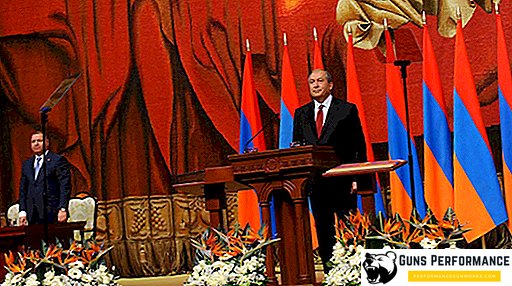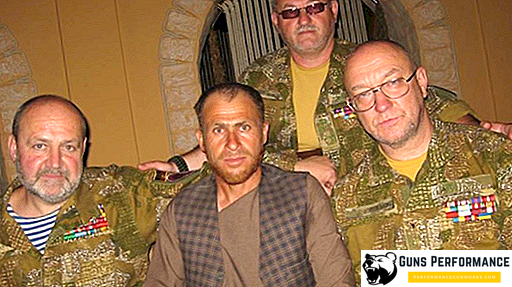RS-20V "Voevod" or R-36M, known as the "Satan" SS-18 (in the designation of NATO) - the most powerful rocket in the world. "Satan" will remain in the combat personnel of the Strategic Missile Forces of Russia until 2026. The SS-18 Satan is the most powerful intercontinental ballistic missile in the world, it was put into service in December 1975, and its first test launch was carried out in February 1973.
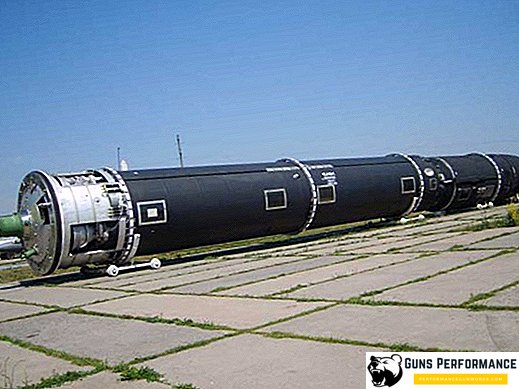
The R-36M missiles in various modifications can carry from 1 to 10 (in some cases up to 16) combat units with a total mass (with a breeding unit and a head fairing) up to 8.8 thousand kg at a distance of over 10 thousand km. Two-stage rockets in Russia are housed in high-security mines, where they are stored in a special transport and launch container, ensuring their “mortar” launch. Strategic missile has a diameter of 3 m and a length of more than 34 m.
Quantity and cost
Missiles of this type are the most powerful of the existing intercontinental missiles, they are capable of delivering a crushing nuclear strike against the enemy. In the West, these missiles are called "Satan."
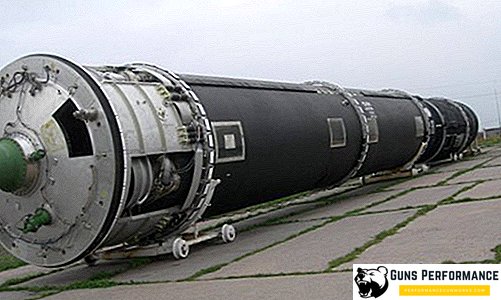
The Russian Strategic Missile Forces for 2018 have 75 combat missile systems equipped with Satan missiles (a total of 750 nuclear warheads). This amounts to almost half of Russia's nuclear potential, with a total of 1,677 warheads. By the end of 2018, most likely, another part of the Satan missiles will be removed from the arsenal of Russia and replaced by more modern missiles.
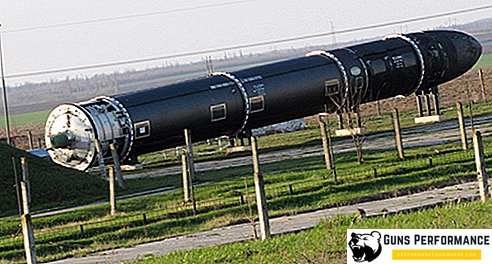
Performance characteristics
R-36M "Satan" has the following performance characteristics:
- Number of steps - 2 + dilution unit
- Fuel - Stored Liquid
- Launcher Type - Mine with Mortar Start
- Power and number of warheads - MILP ID 8 × 900 KT, two monoblock variants; MIRV ID 8 × 550-750 ct
- Mass of the head section - 8800 kg
- Maximum range with light warhead - 16000 km
- Maximum range with severe warhead - 11,200 km
- Maximum range at MIRV IN - 10200 km
- Control system - autonomous inertial
- Accuracy - 1000 m
- Length - 36.6 m
- Maximum diameter - 3 m
- Starting weight - 209.6 t
- Fuel mass - 188 tons
- Oxidizer - Nitrogen Tetroxide
- Fuel - UDMH (heptyl)
History of creation
The intercontinental ballistic missile of the heavy class R-36M was developed at Yuzhnoye Design Bureau (Dnepropetrovsk). On September 2, 1969, a resolution of the USSR Council of Ministers on the creation of the R-36M missile system was adopted. The rocket was supposed to have high speed, power and other high performance. Draft design designers completed in December 1969. The intercontinental nuclear ballistic missile provided for 4 types of combat equipment - with separable, maneuvering and monoblock warheads.

CB "Southern" after the death of the famous M.K. Yangel was headed by Academician V.F. Utkin. Creating a new rocket, which received the designation R-36M, used all the experience gained by the team when creating the previous models of rockets. In general, it was a new rocket system with unique performance characteristics, and not a modification of the P-36. The development of the P-36M went in parallel with the design of other third-generation missiles, the general features of which are:
- the use of HRT IN;
- use of autonomous control system with onboard computer;
- placement of the command post and missiles in buildings of high security;
- the possibility of remote re-targeting just before launch;
- the availability of more advanced means of overcoming missile defense;
- high alert, providing quick start;
- use of an improved management system;
- increased survivability of the complexes;
- increased radius of destruction of objects;
- enhanced combat performance, which provides increased power, speed and accuracy of missiles.
- the radius of the damage zone of the P-36M blocking nuclear explosion is reduced by 20 times compared with the 15A18 missile, the resistance to gamma-neutron radiation is increased by 100 times, the resistance to x-ray radiation - by 10 times.
An intercontinental nuclear ballistic missile R-36M launched for the first time from the Baikonur test site on February 21, 1973. The tests of the missile complex were completed only by October 1975. In 1974, the first missile regiment was deployed in the town of Dombarovsky.
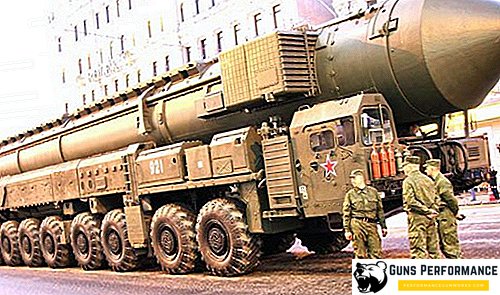
Design features
- The R-36M is a two-stage rocket using sequential separation of stages. The fuel and oxidizer tanks are separated by a combined intermediate bottom. The onboard cable network and the pipelines of the pneumatic-hydraulic system, which are covered with a casing, run along the body. The engine of the 1st stage has 4 autonomous single-chamber LRE, which have a turbo-pump fuel supply according to a closed circuit, they are hinged at the tail end of the stage on the frame. The deviation of the engine command system control allows you to control the flight of the rocket. The engine of the 2nd stage includes a single-chamber marching and four-chamber steering rocket engine.
- All engines run on nitrogen tetraxide and UDMH. In the P-36M, many original technical solutions are implemented, for example, chemical pressurization of tanks, braking of the separated stage with the help of discharge of pressurized gases, and the like. On the P-36M mounted inertial control system, working through the onboard digital computing system. Its use allows to provide high accuracy of shooting.
- The designers have made it possible to launch the R-36M2 even after the enemy’s nuclear attack on the missile area. "Satan" has a dark heat-shielding coating, which facilitates passage through a radiation dust cloud that appeared after a nuclear explosion. Special sensors that measure gamma and neutron radiation during the passage of the nuclear "mushroom" register it and turn off the control system, but the engines continue to work. After exiting the danger zone, the automation switches on the control system and corrects the flight path. This type of ICBM had a particularly powerful military equipment. There were two variants of the warhead: the HLRHI IN with eight BBs (900ft each) and a monoblock thermonuclear (24Mt.) There was also a complex to overcome missile defense systems.








